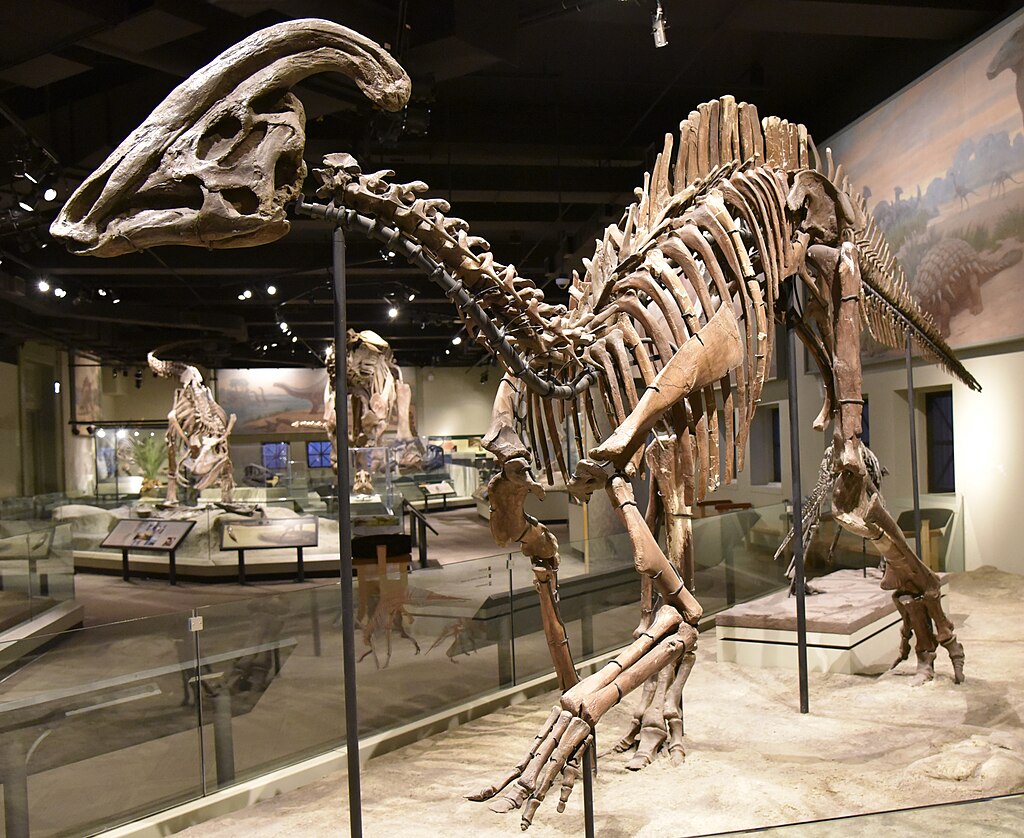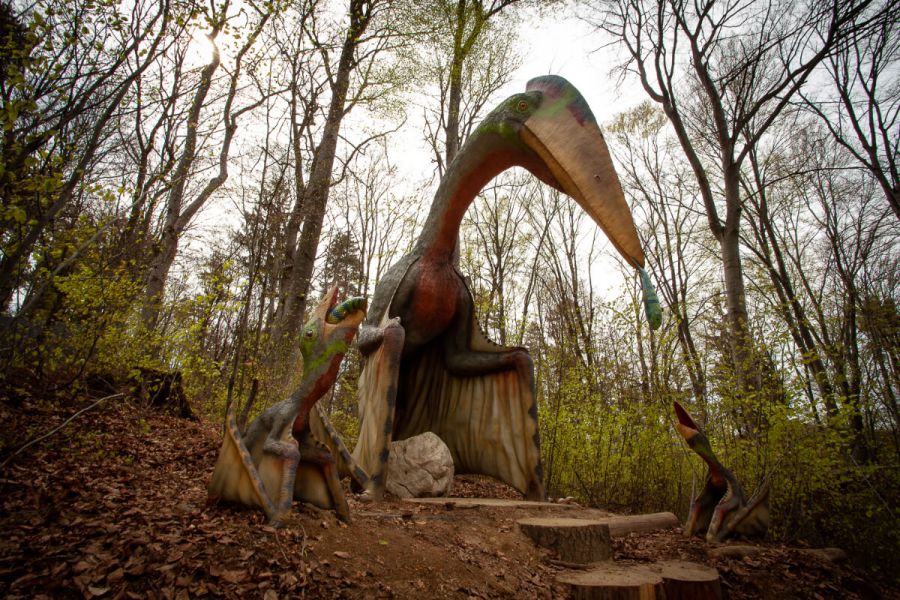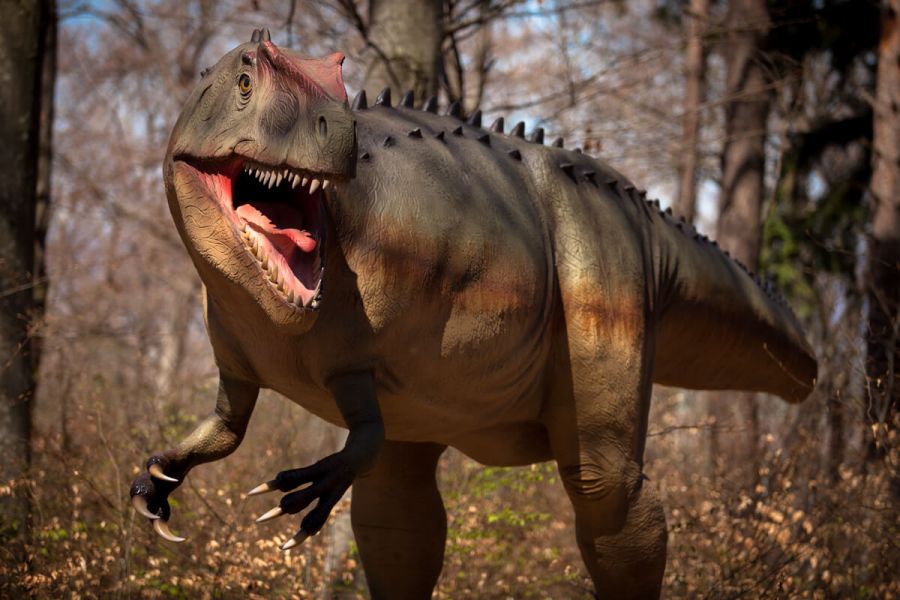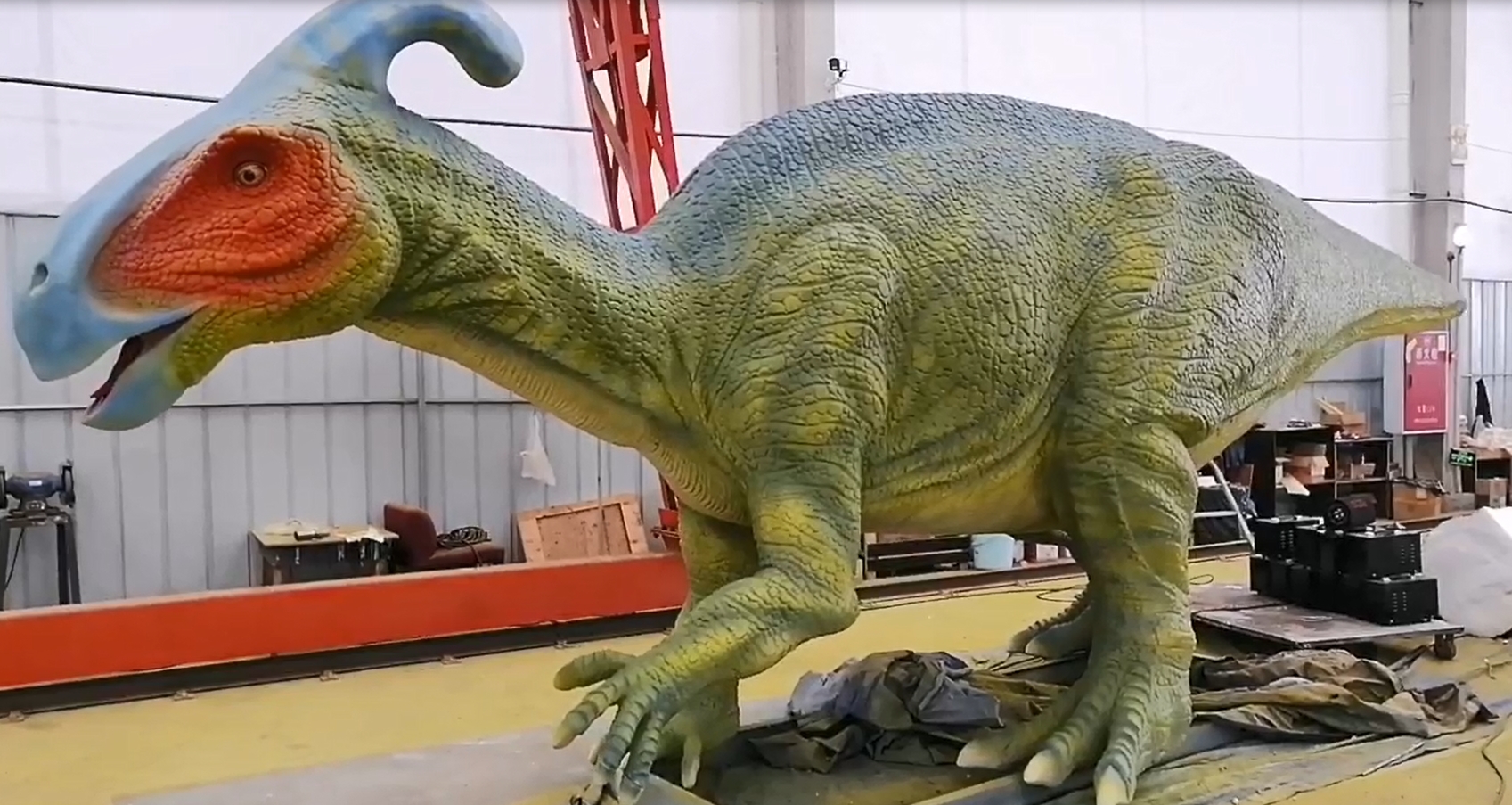Parasaurolophus meaning "beside crested lizard" in reference to Saurolophus, is a genus of hadrosaurid "duck-billed" dinosaur that lived in what is now western North America and possibly Asia during the Late Cretaceous period, about 76.9–70.5 million years ago.
It was a large herbivore that could reach over 9 metres long and weigh over 5 metric tons, and were able to move as a biped and a quadruped. Three species are universally recognized: P. walkeri (the type species), P. tubicen, and the short-crested P. cyrtocristatus. Additionally, a fourth species, P. jiayinensis, has been proposed, although it is more commonly placed in the separate genus Charonosaurus. Remains are known from Alberta, New Mexico, and Utah, as well as possibly Heilongjiang if Charonosaurus is in fact part of the genus. The genus was first described in 1922 by William Parks from a skull and partial skeleton found in Alberta.
It was a large herbivore that could reach over 9 metres long and weigh over 5 metric tons, and were able to move as a biped and a quadruped. Three species are universally recognized: P. walkeri (the type species), P. tubicen, and the short-crested P. cyrtocristatus. Additionally, a fourth species, P. jiayinensis, has been proposed, although it is more commonly placed in the separate genus Charonosaurus. Remains are known from Alberta, New Mexico, and Utah, as well as possibly Heilongjiang if Charonosaurus is in fact part of the genus. The genus was first described in 1922 by William Parks from a skull and partial skeleton found in Alberta.
Parasaurolophus
Parasaurolophus was a hadrosaurid, part of a diverse family of large Late Cretaceous ornithopods that are known for their range of bizarre head adornments, which were likely used for communication and increased hearing. This genus is known for its large, elaborate cranial crest, which forms a long curved tube projecting upwards and back from the skull in its largest form.
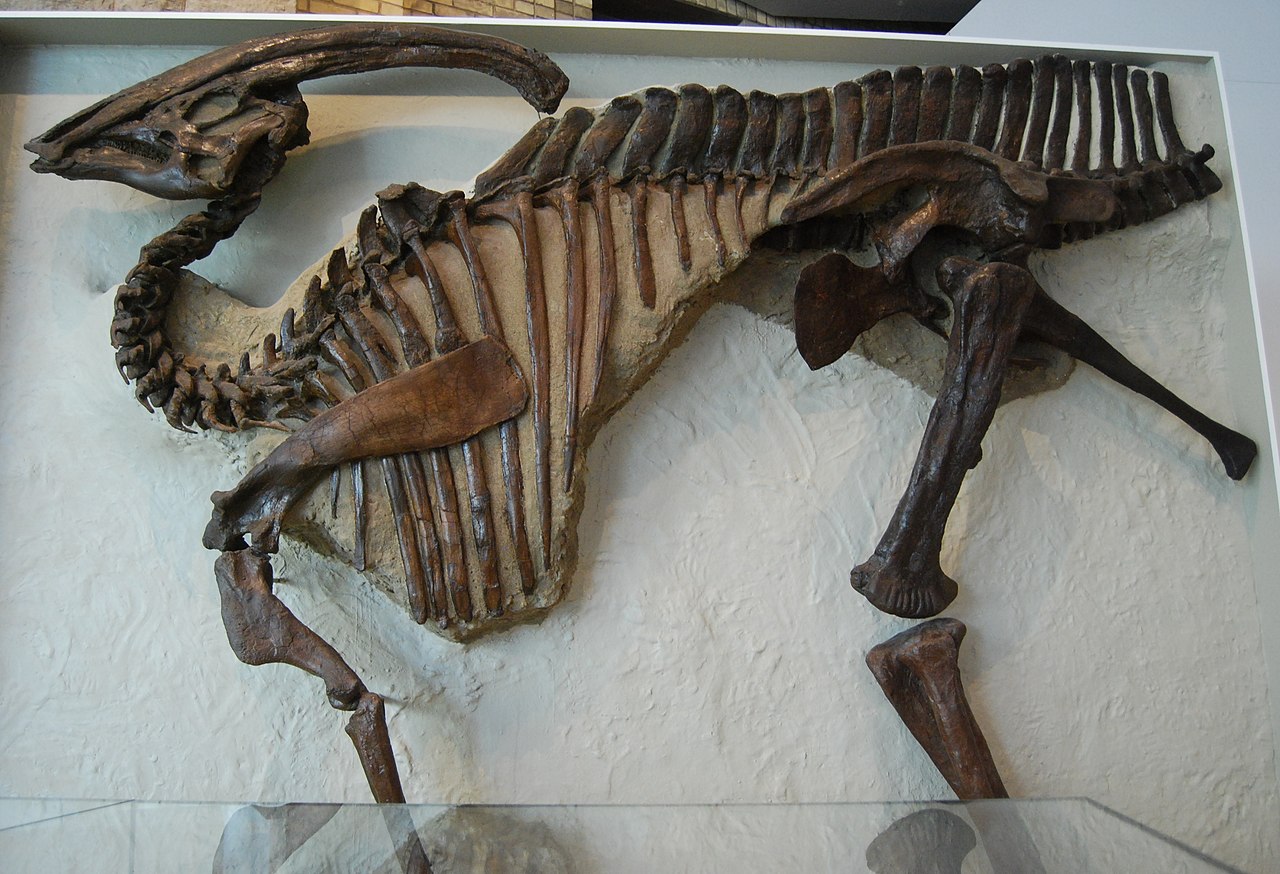
Charonosaurus from China, which may have been its closest relative, had a similar skull and a potentially similar crest. Visual recognition of both species and sex, acoustic resonance, and thermoregulation have been proposed as functional explanations for the crest. It is one of the rarer hadrosaurids, known from only a handful of good specimens.
